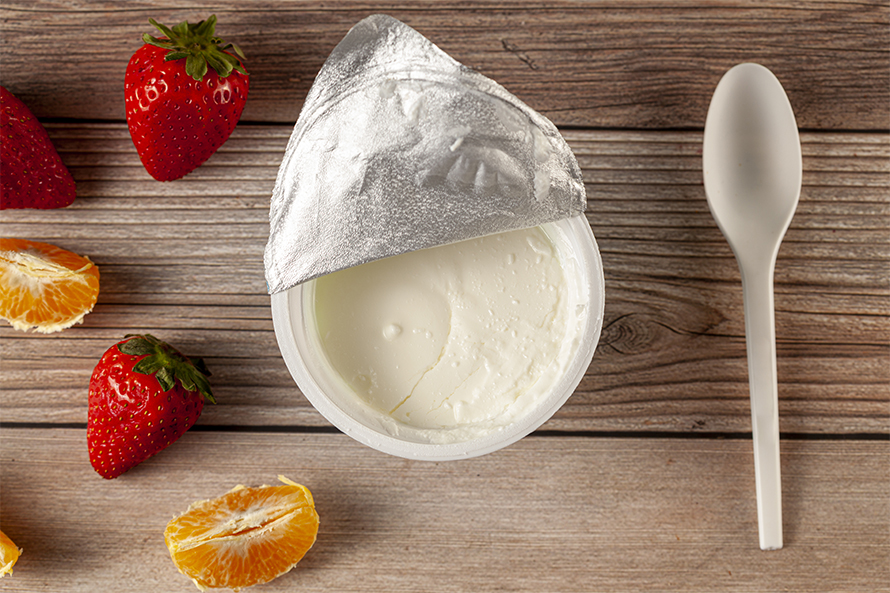Athletes looking for a competitive edge might find it in their microbiome
When milliseconds can mean the difference between silver and gold, endurance athletes in sports like marathon running, cycling, rowing and swimming optimize every aspect of their physiology for a competitive edge.
Many of these efforts result in enhancing the performance of mitochondria, the tiny but mighty energy-generating powerhouses within your cells. Carefully calibrated doses of exercise combined with beneficial stress – altitude, cold and heat – and optimized recovery in the form of nutrition, meditation and sleep, positively affect the number and health of mitochondria in the cells of your muscles, heart and brain.
But there is another aspect of endurance training that may have largely been overlooked by athletes and trainers – the role of the gut microbiome in optimizing your mitochondrial health and fitness.
I am a physician-scientist and gastroenterologist who has studied how food affects the gut microbiome’s role in health and disease for over 20 years. While research evaluating food’s effects on the microbiome and mitochondria is improving our understanding of conditions like obesity, cancer, rheumatoid arthritis and Alzheimer’s disease, it might also help athletes achieve new levels of performance through innovative approaches to nutrition.
Of microbiomes and mitochondria
The gut microbiome, a hidden factory of highly collaborative microorganisms in your intestines, ensures that your metabolism, immune system and brain run smoothly. Some researchers liken it to another organ that senses nutritional inputs, manufactures signaling molecules and prepares your body to respond appropriately.
Research has shown that endurance athletes have different gut microbiomes compared with the general population. Their microbiome’s composition and function, like increased production of a short-chain fatty acid called butyrate, are associated with increased VO2 max, a fitness benchmark that measures your ability to consume oxygen during intense exercise. One organism in particular, Veillonella is found in some elite runners and may help raise lactate threshold, a fitness metric closely linked to mitochondrial function and how long an athlete is able to sustain intense effort.
A healthy microbiome communicates with the mitochondria, the tiny structures within your cells that convert calories into the raw cellular energy required for muscle contraction and other essential functions. It does this by transforming undigested food components of a healthy diet – like fiber, polyunsaturated fats and polyphenols – into molecules that increase the number and health of your mitochondria.
Some of these metabolites – butyrate, conjugated linoleic acid and urolithin A among them – have been shown to specifically improve muscle strength and endurance. Combining exercise with diets high in fiber, polyphenols – a chemical compound from plants – and healthy fats may thus augment mitochondrial fitness and improve exercise performance.
Nutritional gaffes and gaps
Healthy diets are critical for microbiome and mitochondrial health. Conversely, ultra-processed diets have been linked to conditions ranging from obesity and cancer to autoimmune disease and Alzheimer’s disease. Some people believe athletes are protected from the adverse health effects of ultra-processed diets due to the beneficial effects of exercise. While this may partially be true, it’s important to consider other factors in diet beyond just the calories burned.
Additives used to improve the taste and appearance of food, like emulsifiers, can negatively affect the gut microbiome, compromising the gut barrier and causing systemic inflammation, an unhealthy state linked to metabolic disease, cancer, autoimmune conditions and neurodegenerative diseases. Ultra-processed foods have also removed key factors like fiber, polyphenols and healthy fats found in whole foods that support gut health and signal to the mitochondria that there are calories to be metabolized.

The drinks, shakes, bars and gels used for endurance sports are processed foods formulated to provide concentrated and accessible energy during intense exercise. While unhealthy in other contexts, they can be key for enhancing performance during long endurance events when your body depletes its own version of accessible carbohydrates called glycogen.
But it’s important to complement these energy supplements with a healthy diet in the recovery hours following exercise. The combination of an unhealthy baseline diet with high-intensity exercise could compromise your gut barrier and increase inflammation. This has been linked to various training-related issues including gastrointestinal upset, musculoskeletal injuries and respiratory illnesses.
Performance-enhancing microbes
Reintroducing a diet rich in foods that positively affect your microbiome — beans, nuts, seeds, whole grains, fruits and vegetables — during the recovery phase of training can help most people prevent the adverse effects of high-intensity exercise and optimize performance.
However, due to antibiotic misuse and processed diets, some people lack key microbes and metabolic machinery needed to convert fibers and polyphenols into useful molecules the body can use. This shortage may explain why some healthy foods and diets might not be beneficial or tolerated by everyone.

Healthy diets might then benefit from reintroducing key microbes into the gastrointestinal tract. Research has shown that specific strains of probiotic bacteria can improve barrier function, reduce systemic inflammation and potentially enhance athletic performance by mitigating the side effects of high-intensity exercise. An alternative approach is to increase consumption of fermented foods, such as yogurt and pickled vegetables, which can increase microbiome diversity and decrease systemic inflammation.
In some cases, healthy foods might also be complemented by directly providing the body the key metabolites that microbes produce. Research shows that these metabolites – also called postbiotics or exercise mimetics – enhance muscle strength and exercise performance. Some postbiotics also function as prebiotics that fuel the growth of healthy microbes and help restore a damaged microbiome.
From research to podium
While the benefits of nutrition targeting your microbiome and mitochondria for general health are increasingly clear, this approach is still in the early days of exploration in endurance sports.
For the occasional exerciser and weekend warrior, whole nutrition strategies that support the microbiome and mitochondria could be quite helpful. These strategies have the potential to improve performance, protect against adverse training effects and prevent chronic health conditions like obesity, cancer and Alzheimer’s disease.
For elite athletes seeking even the smallest of improvements in an already finely tuned training regimen, further research into the gut microbiome’s influence on performance might be invaluable. In a highly competitive field where nothing can be left off the table — or in the cupboard — such interventions might just be the deciding factor between finishing on the podium or off it.
This article is republished from The Conversation under a Creative Commons license. Read the original article.
![]()
Enjoy reading ASBMB Today?
Become a member to receive the print edition four times a year and the digital edition monthly.
Learn moreGet the latest from ASBMB Today
Enter your email address, and we’ll send you a weekly email with recent articles, interviews and more.
Latest in Science
Science highlights or most popular articles

The science of staying strong
Muscles power every movement, but they also tell the story of aging itself. Scientists are uncovering how strength fades, why some species resist it and what lifestyle and molecular clues could help preserve muscle health for life.

Bacteriophage protein could make queso fresco safer
Researchers characterized the structure and function of PlyP100, a bacteriophage protein that shows promise as a food-safe antimicrobial for preventing Listeria monocytogenes growth in fresh cheeses.

Building the blueprint to block HIV
Wesley Sundquist will present his work on the HIV capsid and revolutionary drug, Lenacapavir, at the ASBMB Annual Meeting, March 7–10, in Maryland.

Gut microbes hijack cancer pathway in high-fat diets
Researchers at the Feinstein Institutes for Medical Research found that a high-fat diet increases ammonia-producing bacteria in the gut microbiome of mice, which in turn disrupts TGF-β signaling and promotes colorectal cancer.

Mapping fentanyl’s cellular footprint
Using a new imaging method, researchers at State University of New York at Buffalo traced fentanyl’s effects inside brain immune cells, revealing how the drug alters lipid droplets, pointing to new paths for addiction diagnostics.

Designing life’s building blocks with AI
Tanja Kortemme, a professor at the University of California, San Francisco, will discuss her research using computational biology to engineer proteins at the 2026 ASBMB Annual Meeting.

